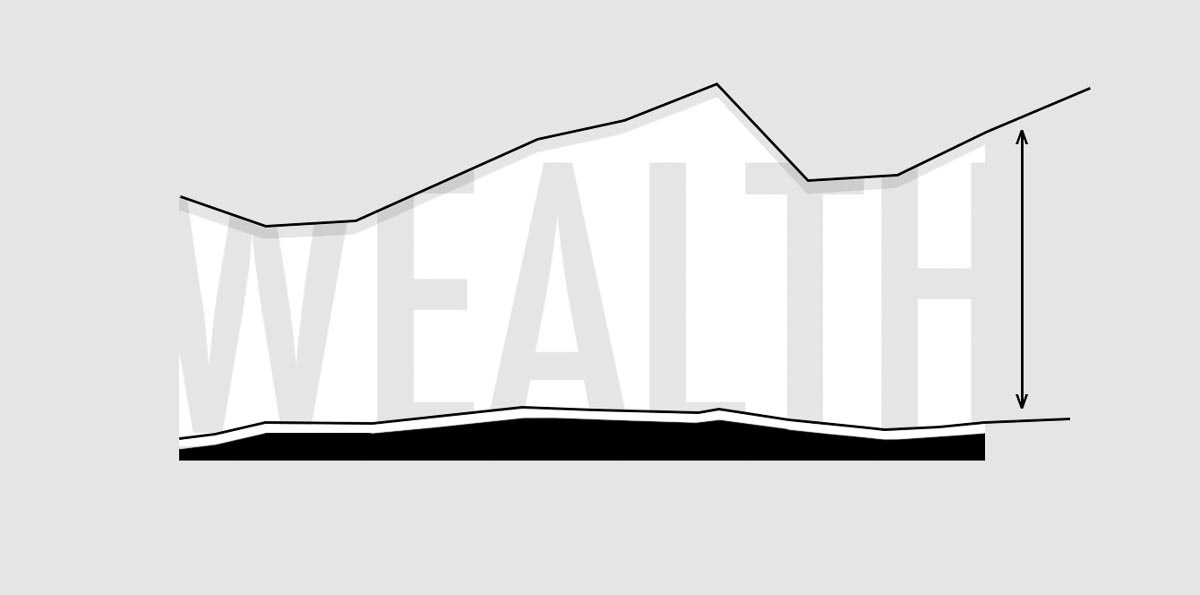Following the events of the past few months, white Americans are perhaps more aware now than any other time in U.S. history of the nation’s deeply rooted inequalities as they’ve watched those inequalities fuel the racial disparities in COVID-19 deaths and the police brutality that left George Floyd dead on a street in Minneapolis.
The gap in wealth is a very large piece of the aggregate inequality that has been growing for years and includes severely limited access to opportunities such as education, health care and housing, as well as the damage and disadvantage brought on by discriminatory policies, racial injustice and systemic racism.
In February, a Brookings Institution examination of the Black-white wealth gap showed that in 2016, the average white family in America had a net worth of $171,000 — almost 10 times as much as the average Black family’s net worth of $17,150.
And just 3.2% of executive or senior-level positions are held by Black Americans, who make up 13% of the U.S. population, according to a recent report from the Center for Talent Innovation.
A new study comparing the racial equality of the economies in each state and the District of Columbia ranks Texas’ economy No. 5 in the nation in terms of the disparities in employment and wealth between Black and white residents.
In total, the 50 states and the District of Columbia were compared across eight key metrics by personal-finance website WalletHub. The data compares the difference between white and Black Americans in areas such as annual income, unemployment rate and homeownership rate.
New Mexico, Alaska, Arizona and Hawaii were ranked ahead of Texas. The five state economies with the least racial equality were Michigan, Iowa, Minnesota, Illinois and Wisconsin. The District of Columbia was last on the list.
The overall Black unemployment rate is consistently higher than the white unemployment rate, too — 4% higher nationwide for May 2020.
In 2019, the white unemployment rate in Texas was 3.2% overall and 3.1% for white men. The unemployment rate for Black residents was 5.3% overall and 6.2% for Black men. Overall, the state’s unemployment rate was 3.5%, according to the U.S. Bureau of Labor Statistics.
Nationwide, the unemployment rate last year was 3.7%. That dropped to 3.3% for the white population; however, the national unemployment rate for Black Americans was 6.1%.
According to the WalletHub study, Texas ranks No. 8 for racial equality in homeownership rate. The Kinder Institute for Urban Research’s 2020 State of Housing in Houston and Harris County report, which comes out June 23, shows that overall homeownership rates have been declining in both the city and county since 2010 but the rate at which it’s dropped is slightly higher for Black residents. White homeownership rate is almost double the Black homeownership rate in both Houston (57% versus 31%) and Harris County (68% versus 37%). The gap in homeownership rate between white and Black residents in Harris County increased from 30% in 2010 to 31% in 2018. In Houston, the gap grew as well, from 24% in 2010 to 26% in 2018.
The findings from the Kinder Institute’s inaugural State of Housing report will be shared during a webinar on June 23 from 9:30–11 a.m. The webinar will include a summary of the 2020 report and a panel discussion with local and national leaders about COVID-19’s impact on the housing system. Register here to join the discussion.
In Houston, the poverty rate is 20.6% — much higher than Texas (15%) and the nation (13%).
And the poverty rate gap between white and Black Houstonians is 16.4% — three times as many Black residents live below the poverty line as whites. Overall, the poverty rate gap—which WalletHub used in determining its rankings — in Texas is 12% (8% versus 20%) and 13% for the entire U.S. (9% versus 22%.)
Here’s how Texas’ economy ranked in racial equality, according to the WalletHub study:
8th – Median annual income
6th – Labor-force participation rate
8th – Unemployment rate
8th – Homeownership rate
3rd – Poverty rate
1st – Homeless rate
1st – Share of unsheltered homeless
According to WalletHub, the findings were determined by grading each of the eight metrics used on a 100-point scale, with a score of 100 representing the most equality. The level of equality was determined by subtracting the values attributed to whites and Blacks for a given metric, using only the most recent available data from the U.S. Census Bureau, U.S. Equal Employment Opportunity Commission and U.S. Department of Housing and Urban Development.
The gaps between white and Black people in median annual income, homeless rate, poverty rate, homeownership rate, unemployment rate, labor-force participation rate, share of unsheltered homeless and share of executives in each state and the District of Columbia were compared.

